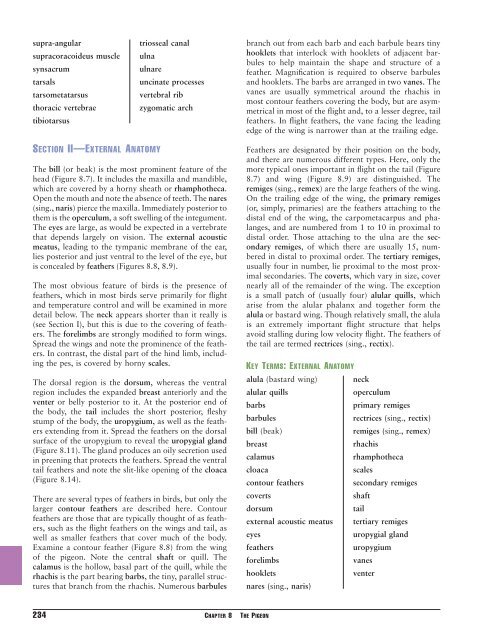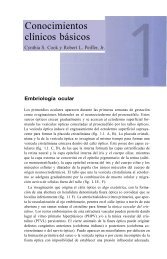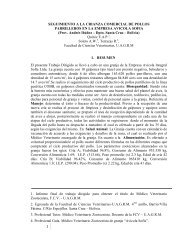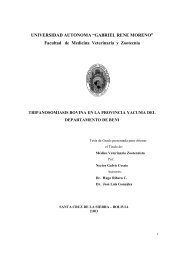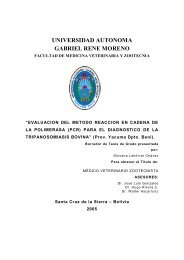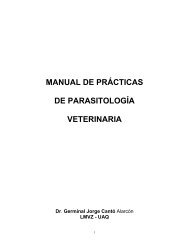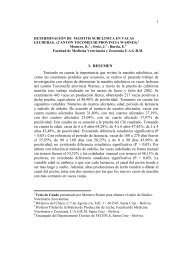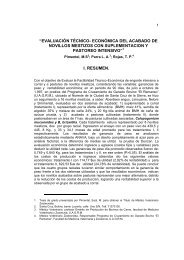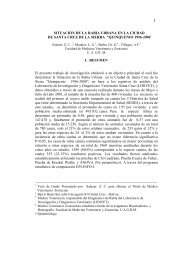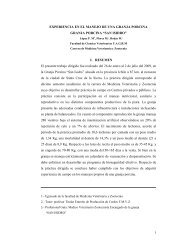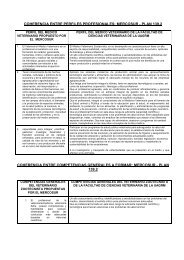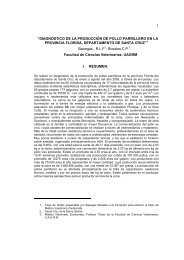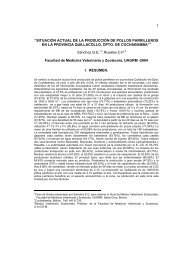The Dissection of Vertebrates A Laboratory Manual
The Dissection of Vertebrates A Laboratory Manual
The Dissection of Vertebrates A Laboratory Manual
You also want an ePaper? Increase the reach of your titles
YUMPU automatically turns print PDFs into web optimized ePapers that Google loves.
supra-angular<br />
supracoracoideus muscle<br />
synsacrum<br />
tarsals<br />
tarsometatarsus<br />
thoracic vertebrae<br />
tibiotarsus<br />
SECTION II—EXTERNAL ANATOMY<br />
triosseal canal<br />
ulna<br />
ulnare<br />
uncinate processes<br />
vertebral rib<br />
zygomatic arch<br />
<strong>The</strong> bill (or beak) is the most prominent feature <strong>of</strong> the<br />
head (Figure 8.7). It includes the maxilla and mandible,<br />
which are covered by a horny sheath or rhamphotheca.<br />
Open the mouth and note the absence <strong>of</strong> teeth. <strong>The</strong> nares<br />
(sing., naris) pierce the maxilla. Immediately posterior to<br />
them is the operculum, a s<strong>of</strong>t swelling <strong>of</strong> the integument.<br />
<strong>The</strong> eyes are large, as would be expected in a vertebrate<br />
that depends largely on vision. <strong>The</strong> external acoustic<br />
meatus, leading to the tympanic membrane <strong>of</strong> the ear,<br />
lies posterior and just ventral to the level <strong>of</strong> the eye, but<br />
is concealed by feathers (Figures 8.8, 8.9).<br />
<strong>The</strong> most obvious feature <strong>of</strong> birds is the presence <strong>of</strong><br />
feathers, which in most birds serve primarily for flight<br />
and temperature control and will be examined in more<br />
detail below. <strong>The</strong> neck appears shorter than it really is<br />
(see Section I), but this is due to the covering <strong>of</strong> feathers.<br />
<strong>The</strong> forelimbs are strongly modified to form wings.<br />
Spread the wings and note the prominence <strong>of</strong> the feathers.<br />
In contrast, the distal part <strong>of</strong> the hind limb, including<br />
the pes, is covered by horny scales.<br />
<strong>The</strong> dorsal region is the dorsum, whereas the ventral<br />
region includes the expanded breast anteriorly and the<br />
venter or belly posterior to it. At the posterior end <strong>of</strong><br />
the body, the tail includes the short posterior, fleshy<br />
stump <strong>of</strong> the body, the uropygium, as well as the feathers<br />
extending from it. Spread the feathers on the dorsal<br />
surface <strong>of</strong> the uropygium to reveal the uropygial gland<br />
(Figure 8.11). <strong>The</strong> gland produces an oily secretion used<br />
in preening that protects the feathers. Spread the ventral<br />
tail feathers and note the slit-like opening <strong>of</strong> the cloaca<br />
(Figure 8.14).<br />
<strong>The</strong>re are several types <strong>of</strong> feathers in birds, but only the<br />
larger contour feathers are described here. Contour<br />
feathers are those that are typically thought <strong>of</strong> as feathers,<br />
such as the flight feathers on the wings and tail, as<br />
well as smaller feathers that cover much <strong>of</strong> the body.<br />
Examine a contour feather (Figure 8.8) from the wing<br />
<strong>of</strong> the pigeon. Note the central shaft or quill. <strong>The</strong><br />
calamus is the hollow, basal part <strong>of</strong> the quill, while the<br />
rhachis is the part bearing barbs, the tiny, parallel structures<br />
that branch from the rhachis. Numerous barbules<br />
234 CHAPTER 8 THE PIGEON<br />
branch out from each barb and each barbule bears tiny<br />
hooklets that interlock with hooklets <strong>of</strong> adjacent barbules<br />
to help maintain the shape and structure <strong>of</strong> a<br />
feather. Magnification is required to observe barbules<br />
and hooklets. <strong>The</strong> barbs are arranged in two vanes. <strong>The</strong><br />
vanes are usually symmetrical around the rhachis in<br />
most contour feathers covering the body, but are asymmetrical<br />
in most <strong>of</strong> the flight and, to a lesser degree, tail<br />
feathers. In flight feathers, the vane facing the leading<br />
edge <strong>of</strong> the wing is narrower than at the trailing edge.<br />
Feathers are designated by their position on the body,<br />
and there are numerous different types. Here, only the<br />
more typical ones important in flight on the tail (Figure<br />
8.7) and wing (Figure 8.9) are distinguished. <strong>The</strong><br />
remiges (sing., remex) are the large feathers <strong>of</strong> the wing.<br />
On the trailing edge <strong>of</strong> the wing, the primary remiges<br />
(or, simply, primaries) are the feathers attaching to the<br />
distal end <strong>of</strong> the wing, the carpometacarpus and phalanges,<br />
and are numbered from 1 to 10 in proximal to<br />
distal order. Those attaching to the ulna are the secondary<br />
remiges, <strong>of</strong> which there are usually 15, numbered<br />
in distal to proximal order. <strong>The</strong> tertiary remiges,<br />
usually four in number, lie proximal to the most proximal<br />
secondaries. <strong>The</strong> coverts, which vary in size, cover<br />
nearly all <strong>of</strong> the remainder <strong>of</strong> the wing. <strong>The</strong> exception<br />
is a small patch <strong>of</strong> (usually four) alular quills, which<br />
arise from the alular phalanx and together form the<br />
alula or bastard wing. Though relatively small, the alula<br />
is an extremely important flight structure that helps<br />
avoid stalling during low velocity flight. <strong>The</strong> feathers <strong>of</strong><br />
the tail are termed rectrices (sing., rectix).<br />
KEY TERMS: EXTERNAL ANATOMY<br />
alula (bastard wing)<br />
alular quills<br />
barbs<br />
barbules<br />
bill (beak)<br />
breast<br />
calamus<br />
cloaca<br />
contour feathers<br />
coverts<br />
dorsum<br />
external acoustic meatus<br />
eyes<br />
feathers<br />
forelimbs<br />
hooklets<br />
nares (sing., naris)<br />
neck<br />
operculum<br />
primary remiges<br />
rectrices (sing., rectix)<br />
remiges (sing., remex)<br />
rhachis<br />
rhamphotheca<br />
scales<br />
secondary remiges<br />
shaft<br />
tail<br />
tertiary remiges<br />
uropygial gland<br />
uropygium<br />
vanes<br />
venter


